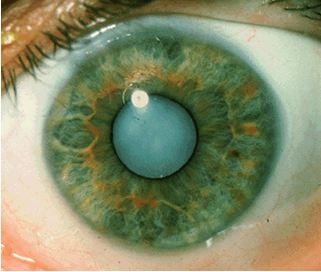Explaining the relationship between cataracts and Celiac disease.
When many people think of someone who is at risk for cataracts, they often picture an individual who is well into their senior years with bad eyesight and clouded vision. In most cases, they would be right on the money―cataracts is an age-related eye disease that affects more than 22 million Americans over the age of 40.
 However, while cataracts has always been a disease that many people think they don’t have to worry about until they got older, recent studies are finding that a new group of people may face a slightly increased risk of developing cataracts, and age has nothing to do with it.
However, while cataracts has always been a disease that many people think they don’t have to worry about until they got older, recent studies are finding that a new group of people may face a slightly increased risk of developing cataracts, and age has nothing to do with it.
In a recent study published by the American Journal of Epidemiology, researchers found that people who suffer from celiac disease are at a much higher risk of developing cataracts than those who are not diagnosed with the disease.
But what exactly does this common eye problem have to do with a disease relating to the intestine? Let’s dive a little deeper into the relationship between cataracts and celiac disease:
What Is Celiac Disease?
Celiac disease is a condition which damages the lining of the small intestine, preventing it from being able to absorb certain foods that are essential for staying healthy. Some of these foods include gluten―a protein that is found in wheat, barley and rye. If for some reason someone with celiac disease does ingest gluten, their immune system damages the villi (an area in the lining of the intestines) which is the part of the intestine which absorbs nutrients. Without these nutrients, a person can easily become malnourished and may suffer from vitamin deficiencies.
So, what does this all have to do with cataracts? Because vitamin deficiencies are greatly related to the formation of cataracts, this means people with celiac disease also have an increased risk of cataract formation. In fact, in the same study, 28,756 people with celiac disease were observed over a period of six years and 1,159 were found to have developed cataracts within that time.
How Do Cataracts Form?
Despite the fact that people with celiac disease are at a higher risk for developing cataracts, they will still develop the same signs and symptoms as anyone who becomes infected with the eye disease.
The reason that cataracts form in the first place is because the lens of the eye becomes clouded, blocking or changing the passing of light into the eye. This happens when the protein fibers and water molecules that are specially arranged to allow light to pass through become damaged and break down. As a result, they cluster together and cloud the lens of the eye, causing blurry sight and distorting vision. Over time, as fibers continue to break down and the clouding becomes more dense, it will cover a larger part of the lens, causing cataracts.
If you believe that you have started to develop some of the signs and symptoms that are associated with cataracts, it is important to contact an eye care professional so that you can get your symptoms taken care of before they develop any further. After all, as long as you maintain healthy vision and schedule regular eye care checkups, you can help to ensure that your vision remains strong well into your senior years.